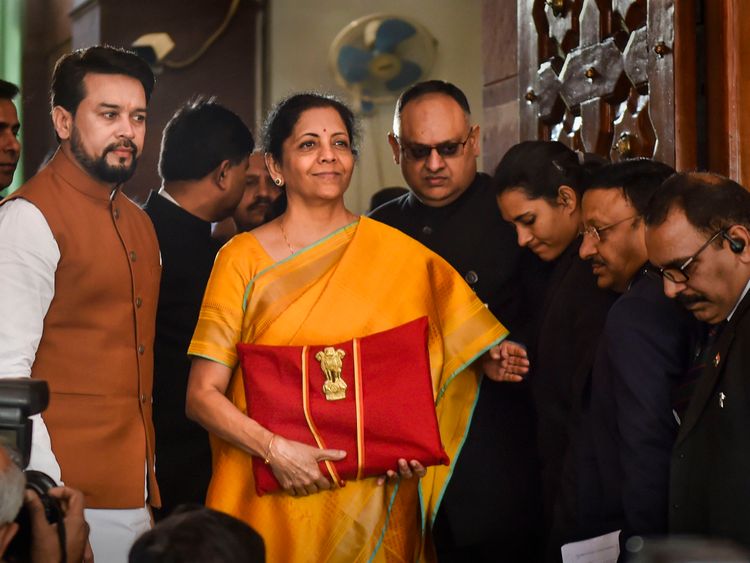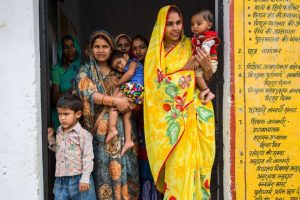Introduction
Budget making is not as simple as making mathematical calculations. It is a complex form of scientific process which involves experimenting, analysing, scrutinizing, evaluating and forming a financial roadmap of the country for the ensuing financial year. Budget of a country reflects the intention of the government, its policies, priorities, availability and allocation of resources and the country’s economic condition. The Union Budget of India is referred to as the “Annual Financial Statement” under “Article 112” of the Constitution of India. Formation Of Union Budget mainly involves three steps-:
Preparation Of Budget
Enactment Of Budget
Execution Of Budget
Table of Contents
Historical References
The term ‘budget’ has been derived from the old French word ‘Bougette’ which means “leather bag or wallet“. This term was first used in 1773, by President Walpole and chancellor of the exchequer in an Annual speech on the nation’s finances.
Reference in Budget can be found In “Kautilya’s Arthashastra”, where he said that chancellor should be the first person to estimate the revenue from each place and spheres of activity under different heads of account and then arrive at a grand total. Total revenue was calculated by adding all the receipts of current year and previous year, if received recently. Outstanding revenues were estimated from work under construction from which revenues will be generated upon completion, unpaid taxes, unrecoverable dues, advances to be paid by officers etc.
The origin of the Modern Budgeting system can be traced back to the Norman Period, where two departments dealt with Finance Treasury and the Exchequer. The treasury received and gave out money on behalf of the Monarch, while the exchequer was responsible for keeping an audit of accounts.
Steps In the Preparation Of Budget
Preparation of the budget requires the following steps. Some of them are as follows-:
Issuance Of Circulars, forms and details
The initial process of Budget making starts in the third quarter of the financial year (August-September) i.e. six months prior to the budget presentation. The Finance Ministry issues skeleton forms to all union ministries, autonomous bodies, states, UTs, departments and other field officers who are tasked to provide details about financial expenditure and receipts for the past, current and next financial year.
Accumulation Of Data
Data estimates provided by the ground level officers are scrutinized by the top level officers. Upon approval / revisions by top level officers it is sent to concerned ministries for further securitization, where they are thoroughly examined. Finally they are sent to the Finance Ministry who then co-relates these estimates with the current economic States condition such as availability of resources, to determine its feasibility. Accumulation of Data includes estimates of Expenditure, revenue and deficit.
Estimates Of Expenditure
Ministries along with planning commission are required to provide initial estimates of the plan and non planned Expenditure. The planning commission allocates funds for the present plans and programmes and also for the new programmes that will be undertaken. The expenditure secretary consolidates everything and after intensive discussion with financial advisors, estimates of budgets are set forth for the ensuing financial year.
Estimates of Revenue Receipts
After the estimation of Expenditure, revenue assessment is done as to how much money is expected to flow into the government’s treasury. Revenue Receipts are of two types-:
Capital Receipts– It includes repayment of loans given by the government and dividend on investment in PSUs, fees and other services it renders.
Current Receipts– It includes mainly tax revenues, receipts by the way of dividends from public sector units and interest payments on loans given by central government.
Controlling the deficit– Budgetary deficit occurs when the revenue expense increases than revenue income. These deficits are foresighted and if necessary changes are made in the expense to be incurred. Also any deficit in the overall budget can be filled through a revision in tax rates, if feasible.
Budget Composition
After complete analysis and scrutiny, the finance Ministry then allocates revenues to the various administrative ministries and devises new public welfare schemes. Often disputes arise in allocation of resources, in such cases the finance ministry consults with the prime minister or union cabinet and these disputes are settled peacefully. After allocation of resources to future expenditure, the finance ministry along with CBDT(Central Board of Direct Taxes), CBEC (Central Board of Excise and Customs) prepares a report of the estimated revenues to be generated in the ensuing financial year. During this process, various departments of the finance ministry consult various stakeholders, policy makers, economists and the general public such as farmers and small business owners to gain more insight and prepare an efficient budget.
Printing Of Budget
The printing of the Union budget begins with the tradition of ‘halwa ceremony’ which is prepared in a ‘big kadai’. The finance minister along with all other officials and staff involved in the preparation of the budget eat ‘halwa’ as a sign of achievement. Post completion of the ceremony the printing process begins. During this process, all the officials and staff are confined to the premises of the ministry, isolated from any contact with the outside world, since the details of the budget are confidential before it is tabled in the parliament.
Enactment Of Budget
Enactment of Budget requires following steps. Some of them are as follows-:
Presentation Of Budget
The Union Budget is presented by the Finance Minister In the parliament with a ‘Budget Speech’, highlighting the salient points of the entire budget that may run into thousands of pages. It is presented with a scheduled date, February 1. Earlier the budget was presented into two parts- Railway Budget in Lok Sabha by the railway minister in the third week of February, and General Budget by the Finance Minister. However this 93 year old practice came to an end and the Railway Budget was merged into the Union Budget, this decision was based on the recommendation of the committee chaired by members of Niti Aayog, Bibek Debroy. However during election years, the budget is prepared and presented twice. Firstly, an interim Budget which is an estimate of Expenditure and receipts of the next two-four months is presented. After the election, the final Budget for the rest of fiscal year is presented by the government.
The first Union Budget of independent India was presented by RK. Shanmukhan Chetty on November 26, 1947.
General Discussions
The general discussion of a Budget starts a few days after it is presented in the parliament. This discussion takes place in both the Houses of parliament and lasts 3-4 days. During this stage, Lok Sabha can discuss the whole Budget on any questions or principles involved therein, but no cut motion can be moved nor the budget can be submitted to the vote of the house. The finance minister has a general right to reply at the end of the discussion.
Scrutiny by Departmental Committees
After the general discussion on the budget is over, the Houses are adjourned for about three to four weeks. During this gap period, the 24 departmental standing committees of Parliament examine and discuss in detail the demands for grants of the concerned ministers and prepare reports on them. These reports are submitted to both the Houses of Parliament for consideration. The standing committee system established in 1993 (and expanded in 2004) makes parliamentary financial control over ministries much more detailed, close, in-depth and comprehensive.
Voting on Demand For Grants
Article 113 of the Constitution requires -that any proposal or estimate seeking withdrawal of money from the Consolidated Fund of India should be presented to the Lok Sabha in the form of a demand for grants.
In the light of the reports submitted by the departmental standing committees, the Lok Sabha takes up voting of demands for grants along with the Annual Financial Statement. These demands are presented ministry wise and it becomes a grant after it has been duly voted. However, more than one Demand may be presented for a Ministry or Department depending on the nature of expenditure. Each demand initially gives separately the totals of-
‘voted’ and ‘charged’ expenditure;
the ‘revenue’ and the ‘capital’ expenditure.
the grand total on gross basis of the amount of expenditure for which the demand is presented.
The 2020-21 budget estimates for grants and loans to Union Territories have increased by 252% (Rs 52,864 crore) from revised estimates for 2019-20, which was Rs 15,026 crore. Expenditure on these items constitutes 5% of the Ministry’s total budget for 2020-21.
Guillotine
The guillotine is passing the Demand for Grants without discussion. In total, 26 days are allotted for the voting of demands. On the last day the Speaker puts all the remaining demands to vote and disposes of them whether they have been discussed by the members or not.
Cut Motions
Cut motions are motions for reduction in various demands for grants. Cut motions seek a reduction of an amount of demands of grants on the following grounds: economy, policy cut and token cut. A cut motion, to be admissible, must satisfy the following conditions:
- It should not raise a question of privilege.
- It should not relate to the expenditure charged on the Consolidated Fund of India.
- It should be related to one demand only.
- It should not refer to a matter that is primarily the concern of the Union government.
- It should be clearly evident and should not contain arguments or defamatory statements.
- It should not relate to trivial matters.
- It should not revive discussion on a matter on which a decision has been taken in the same session.
- It should confine to one significant matter.
- It should not relate to a matter that is under adjudication by a court.
Categories of Cut motions
Economy cut
Economy cut motion demands reduction of a specified amount from the demand for Grant representing the welfare of the economy.
Policy cut
According to policy cut motion, the demand for a grant is reduced to Re.1 representing the disapproval of the policy underlying the demand. A member giving such notice should indicate precise terms, the particulars of the policy which he proposes to discuss. It is open to members to advocate alternative policy.
Token cut
Token cut motion is used to voice a grievance. In token cut, the amount of the Demand for Grant is reduced by Rs.100 in order to express a specific grievance.
Passing Of Appropriation Bill
Since the passing of the budget takes almost 2 months, the Government requires the sanction of an amount to maintain itself for this period. According to Art 116, a special provision called (Vote on Account/Appropriation Bill) is created by which a vote of parliament is obtained by the government for a sum sufficient enough for 2 months to incur expenditure. During the election year a vote on an account may exceed from 2-4 months expenditure.
Accordingly, an appropriation bill is introduced to provide for the appropriation, out of the Consolidated Fund of India, all money required to meet:
(a) The grants voted by the Lok Sabha.
(b) The expenditure charged on the Consolidated Fund of India.
The Appropriation Bill becomes the Appropriation Act after it is assented to by the President. This act authorises (or legalises) the payments from the Consolidated Fund of India. However, no amendments can be proposed to the appropriation bill in either house of the Parliament that will have the effect of varying the amount of any grant voted, or of varying the amount of any expenditure charged on the Consolidated Fund of India.
Passing Of Finance Bill
Finance Bill is a money bill that gives effect to the taxation proposals, government expenditure, government borrowings and revenues contained in the Budget and lays down the government’s financial plan. The Finance Bill is introduced in the Lok Sabha immediately after the presentation of the annual budget, as directed by Article 110 (a) of the Constitution of India. It becomes a finance act for the year concerned after it is passed by the Parliament and receives assent of the President.
While all Money Bills are Financial Bills, all Financial Bills are not Money Bills. For example, the Finance Bill which only contains provisions related to tax proposals would be a Money Bill. However, a Bill that contains some provisions related to taxation or expenditure, but also covers other matters would be considered as a Financial Bill. Only the speaker of Lok Sabha has the power to certify a bill as a money bill provided it fulfills the requirements under Article 110.
Execution of Budget
A budget serves no purpose unless it is enforced. Therefore, once the finance and appropriation bills are passed, the execution process of the Budget starts, that is, revenue and expenditure are regulated according to it. The executive department gets a green signal to collect revenues and start spending money on schemes. Enforcement or execution is the responsibility of the Executive, because grants of money are made by the Legislature to it and it is also the agency authorised to collect the taxes. However, there are three steps required in the process of Execution.
The Revenue Department of the ministry of finance is entrusted with the responsibility of collection of revenue. Various ministries are authorized to draw the necessary amounts and spend them. For this purpose, the Secretary of minister’s acts as the chief accounting authority. The accounts of the various ministers are prepared as per the laid down procedures in this regard. These accounts are audited by the Comptroller and Auditor General of India.
Executive Control over Expenditure
Finance Ministry, as the financial representative and adviser to the Government, sees that any proposed expenditure is as per grants, within the amounts specified, (which are the maxima upto which the executive may spend for the specified purposes), not extravagant, wasteful or improper; before it allows the administrative ministry concerned to proceed with it.
Various Departments under the Finance Ministry exercise control through the techniques of allotment, apportionment and special regulation on certain special blocks of expenditure. Allotment means the division of funds voted by the Legislature into various categories, for different purposes: Vote or grant, major head, minor head, subhead and detailed subheads. Financial codes and rules define the procedure and powers of spending agencies and their officers for spending funds, diverting funds, reappropriation, reporting and accounting.
Tax Administration and Collection
It involves two kinds of operations
Assessment of the revenue- Assessment involves translation of the tax policy authorised by the Legislature into action. Machinery to administer involves rules of procedure, listing of persons liable to pay tax, determining how much each has to pay, including questions about its correctness and fairness, prevention of evasion, investigations, follow up for realisation of arrears and defaults etc.
Collection of the revenue- Physical collection is through demands on the spot (e.g., Customs duty), bills sent to assessees Income Tax Demand Notice), deductions at sources (e.g., Income Tax of salaried employees), through officials/agents in the field (land revenue), through auctions to the highest bidder (e.g., license fees).
Custody of Funds
After the collection and allocation of revenues and expenditure, there is a need for the custody of the funds. This operation has to be organised on two main considerations:
- Safety to avoid all possibilities of embezzlement and misappropriation.
- To ensure convenience and promptness in money transactions.
There are 300 Treasuries and 1200 Sub-treasuries for receiving money on account of the Government and for making payments. The Reserve Bank of India and (where there is no branch or agency of the Reserve Bank) the State Bank of India, also conduct the Treasury business of the Government.



